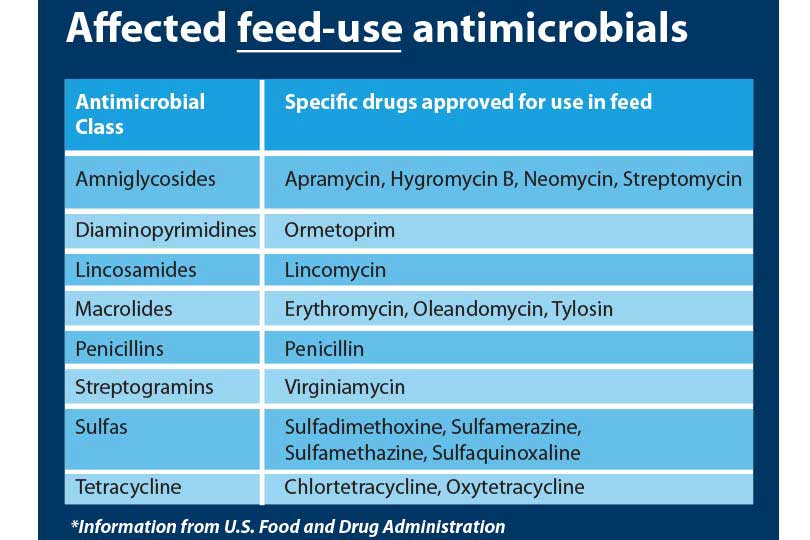By Julie Tomascik
Editor
The new year brought new regulations for farmers and ranchers. Under the Veterinary Feed Directive (VFD), the way feed-grade and water-soluble antibiotics are used in animal production now change.
Under the new regulations, many antibiotics previously available in over-the-counter products will require veterinary oversight and a veterinary feed directive for use.
“It’s understandable that some farmers have misgivings about these changes, given the continuous increase of regulations that apply to them and the scientific realities. But agriculture must demonstrate that we are part of the team working to address antibiotic resistance,” the Animal Agriculture Alliance said in a recent blog post.
To navigate the new regulations, farmers and ranchers should work more closely with their veterinarians to establish veterinarian-client-patient relationships (VCPR).
A valid VCPR allows the veterinarian to assist farmers and ranchers in animal health decisions, especially if antibiotics are required. The veterinarian must have a thorough knowledge of the farm, species of livestock, management practices and goals.
“This ongoing relationship with a veterinarian who knows the herd, its health needs and understands the dynamics of the VFD will be beneficial for all involved,” said Tracy Tomascik, Texas Farm Bureau associate director of Commodity and Regulatory Activities.
When livestock or poultry get sick and are in need of medication, the VCPR will assist all parties in responding to their animal health needs.
“Farmers and ranchers will still have access to the products, but their veterinarian will need to be involved to help make the appropriate decision,” Tomascik said.
After a VFD is written, a copy of the VFD document must be presented to the feed distributor—feed store, feed mill, etc. A copy will be kept on file, and the farmer will be required to maintain the third copy for two years.
The VFD will also slightly alter the way feed mills and distributors operate.
Some products may not be as readily available from as many locations, because they’re used by smaller operations. And there will likely be minimum order requirements for medicated feeds.
For additional information, review the Texas A&M AgriLife Extension Service’s Veterinary Feed Directive Q&A.

